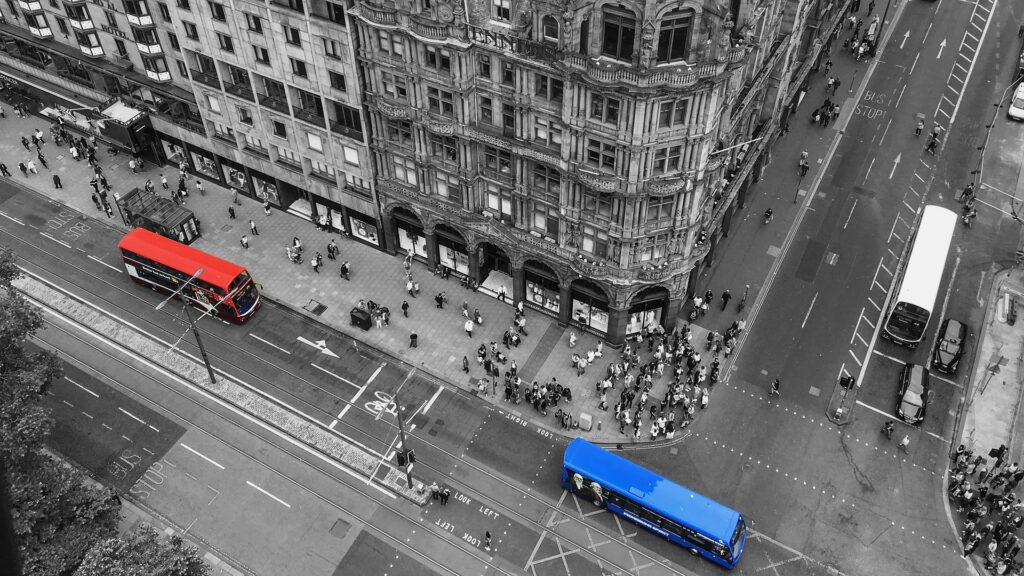THE first hint of something big to come emerged in June. Just a throwaway line, and an otherwise seemingly innocuous survey.
But it raised the question – could Edinburgh city centre be destined for a car free future?
And while the city’s Transport Convener Lesley Macinnes stopped short of being explicit about the future intent then, it looks as if all that could be about to change.
This Thursday, councillors will discuss a document called ‘Edinburgh: Connecting our city, transforming our places’.
It will herald the beginning of a consultation that could lead to all but essential vehicles being pushed out of the city centre, with pedestrians and active travel pursuits being given priority instead.
Such a bold move could put into context why the council has, for example, been keen to push on with plans to extend the city tram project, as well as floating ideas for lorry and freight routes and hubs on the outskirts.
What is not in doubt, is the commitment to hold further Vehicle Free Days like those this summer which closed off parts of George Street and The Mound.
It was here that experts have captured data on emissions which in time, will most likely be used as scientific evidence to back a drive on ridding the city of vehicles.
But more than that, it was a coup in capturing and winning over the hearts and minds of a usually cynical capital, a fun filled and healthy PR exercise executed brilliantly and in one strike, also giving the environmental lobby a much needed hug of hope.
Now supporters are seeking permission to hold the days on the first Sunday of every month.
That will undoubtedly be met by fierce opposition from some with vested interests.
But as well as being popular with the public and tourists, the 10am to 5pm closures would ingrain the concept into people’s thinkings and afford further opportunity for data monitoring and the knock on impacts to other areas and users.
Egos are a fragile thing, but it may also have set Edinburgh ahead of rival cities such as Glasgow, Aberdeen and Dundee by building a momentum towards its much talked about ambitions to deliver an environmental leading city.
And it would echo the success of the Paris Breathes scheme of 2016 in France, and Summer Streets rolled out across New York during August,
Thursday ‘s gathering could prove pivotal.
It will look at three key areas – the City Mobility Plan which will set out a 10 year strategy; development of low emission zones – where it has a chance to score big if it chooses not to make the same mistakes of Glasgow which failed to include the most polluting vehicles in its first pass; and Edinburgh city Centre Transformation – where the capital will look to provide a ‘better’ and perhaps even continental like experience for pedestrians and active travellers.
In its prospectus, the council states:
“Edinburgh, as a growing city, must shape its mobility system for the future to prioritise walking, cycling, and public transport over private car use. The case for change highlights the role of transport as an enabler that can help all communities benefit from the city’s economy; provide access to liveable neighbourhood streets; and support a city centre that is attractive for visitors and prioritises the needs of residents.”
It makes no mention of whether this transport ‘enabler’ would be restricted to targeting environmental and social improvements, or whether it could also be used in its other key priorities in tackling inequality and supporting the economy.
But there is suggestion of a Oyster style ‘smart-card’ that could readily allow that to happen if there was a political, technological and financial will.
Under the banner of delivering a fair and inspiring city, proposals being considered included:
An enhanced transport infrastructure could, in theory, achieve more if it were to offer movement free of charge – supporting those most in need while also drawing further vehicle users away from vehicles.
Among those ideas that have been put down in black and white though are:
A walkable city centre – reducing traffic dominance and priority
Improving streets, gardens, spaces and places – renovating existing and making new civic spaces
Strengthening town centres – creating walkable neighbourhoods and supporting local businesses
Making it easier to use public transport – integrated payment/ticketing that works across bus, tram, bike hire and car club
Making individual journey’s easier – using technology to provide bespoke transport services
With a focus on A Healthy City, other ideas being looked at will include:
Creating a more active city – developing strategic walking and cycling networks
Improving air quality – developing low emission zones and restricting polluting vehicles
Encouraging clean vehicles – expanding network of electric vehicle charging points
Giving people in new developments better transport options
To encourage a Smart and Thriving City, some future thinking ideas to be discussed include:
Widening the reach of public transport – extending and realigning public transport to improve range of origins and destinations
Offering more sustainable choices for longer journeys – expanding park and ride networks and connecting it to more transport choices
[NB: on park and ride – neighbouring Fife Council is currently looking at controversial options to charge for its use, defeating their point. The potential impact on nearby areas such as Edinburgh and Perthshire where traffic may be displaced to could be a consideration]
Protecting the city’s environment while supporting business – creating freight hubs to reduce the impact of large vehicles in urban areas
Controlling the impact of commuter parking – extending parking controls and introducing a workplace parking levy
Looking to the future – improving the use of smart technology across all transport
In her forward as Transport and Environment Convenor for the discussion document, Councillor Macinnes says: “Edinburgh is one of the fastest growing cities in the UK and by 2040 will have a population of almost 600,000.The way we travel, shop, socialise, work and play is also changing, reflecting global trends and new technologies.
“Edinburgh’s growth will provide new jobs, homes and amenities but it must be carefully balanced to provide a high quality of life, access to services and opportunities for all residents, in particular communities that experience inequality.
Reducing congestion and vehicle-borne air pollution, improving journey times by public transport, realising the lifelong health bene ts of walking and cycling, and creating streets and public spaces that support city living for all are key to sustaining our inspiring capital city.”
The document goes on to reflect the administration’s determination, saying: “No change is not an option.”
Little wonder.
Statistics released with the consultation reveal that from 285,500 people working in Edinburgh on any given day – a THIRD travel from outwith the area – most by car.
Park and ride use at Ingliston has tripled to 250,000 a year – Hermiston to 100,000 with 30,000 at Straiton. Even then, 45% of city workers living in the capital also use their car.
Part of the consultation looks at realigning and extending bus services and the tram network so they compliment rather than compete for footfall, with other enhancements at destinations such as click and collect bike hire.
Embedding smart sensors into roads so drivers can be guided to empty parking spots is an option being considered. So to more autonomous transport solutions – presumably akin to the DLR in London which used driverless networks.
But chief among the concerns is the impact on the health of those who live, work and play in the city.
Edinburgh has a long way to go. It is still blighted by a few by toxic hotspots, crippled by congestion and like other tourist traps, under siege from plastic and waste.
Now, though, it seems to be trying. It has a once in a generation opportunity.
And if this really is the political will of the administration and rival parties, if the eco lobby is behind it and can play a key role, and if the residents embrace the chance to make a difference then maybe, just maybe, where the capital leads others will follow.
WANT TO LEARN MORE? Read: Edinburgh takes huge step towards a car free capital with clean air pledge
IMAGE CREDITS: cc ShenXin

